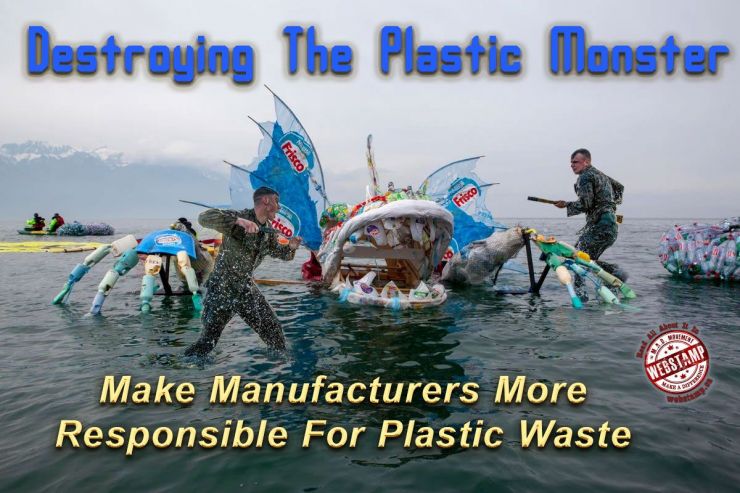WebStamp September 20, 2023
Destroying the Plastic Monster
In this day and age, plastic has become a daily staple in today’s society used in most of the products we use. The large amount of plastic that is being consumed and discarded has become one of the greatest environmental threats of our time. The massive accumulation of synthetic plastic products in the environment has created problems for wildlife and humans as well as the ecosystem. Rivers are the arteries that carry roughly 80% waste of ocean plastic pollution from the land to the ocean. If we don't act now to curb plastic consumption researchers expect the oceans to hold 1 ton of plastic (1 MT) for every 3 tons of fish (2.7 MT) by 2025.
Plastics also plays a huge role in the climate crisis. Every stage of the plastic lifecycle, from cradle to grave, emits greenhouse gases that contribute to climate change. Begins with mining and drilling of fossil fuels, along with fracking that releases large amounts of methane, releasing greenhouse gasses. Refining, polymerization, and plasticization are all extremely energy-intensive processes emitting over 2 million tons of carbon dioxide atmosphere every year. Then the products are packaged, usually with more plastic, and shipped all around the world using more fossil fuels contributing to even more pollution. At the end of their useful life they’re disposed of in a variety of ways of plastic waste management releases carbon dioxide and other greenhouse gases into the atmosphere.
Plastic pollution began in the boardrooms of the top multinational companies dumping products packaged in single-use, non-recyclable plastic in places where there is no infrastructure to manage them. Nestlé uses 1.7 million tonnes of plastic annually with a whopping 98% of Nestlé’s products sold as single-use packaging making Nestlé the third top plastic polluter globally. Back in 2019, Greenpeace paid a visit to Unilever headquarters traveling down Europe’s Rhine River, through the Netherlands, Germany, and France carrying a plastic monster sending a message to Nestlé to drastically reduce the use of plastic that is destroying the ecosystem.
The corporations have created a dilemma in the name of profit and wealth leaving the burden for people to contend with. By 1972 it was obvious that plastic was a problem that needed a solution when governments and environmental activists began educating people about recycling and forced manufacturers to produce plastic that was easier to recycle. Since corporations were unwilling to clean up their mess so as not to reduce their profits, governments created programs to recycle certain profitable plastics at the cost of its citizens.
Back in 2017, the U.S. produced 32.1 million metric tons (MT) of plastic waste with only about 8.4% being recycled. To prevent even more plastic from entering the oceans the Interceptors were created to clean up what comes the rivers after the rains and storms. In December of 2022, Canada banned the use of single-use plastics, but did not go far enough and should’ve included stopping manufacturers from using unrecyclable plastics in their products thus reducing greatly the amount of plastic waste.
The Natural Resources Defense Council (NRDC) has 10 Ways to Reduce Plastic Pollution that anyone can do to help destroy the plastic monster. The obvious are recycling, wean oneself off disposable plastic, stop buying water in plastic bottles, and boycotting microbead products. And the one that will make the most difference: putting pressure on manufacturers to change. What is Your M.A.D. Move to fight the plastic monster.
Articles in this Issue
WebStamp September 20, 2023
References:
List of references used in
article






